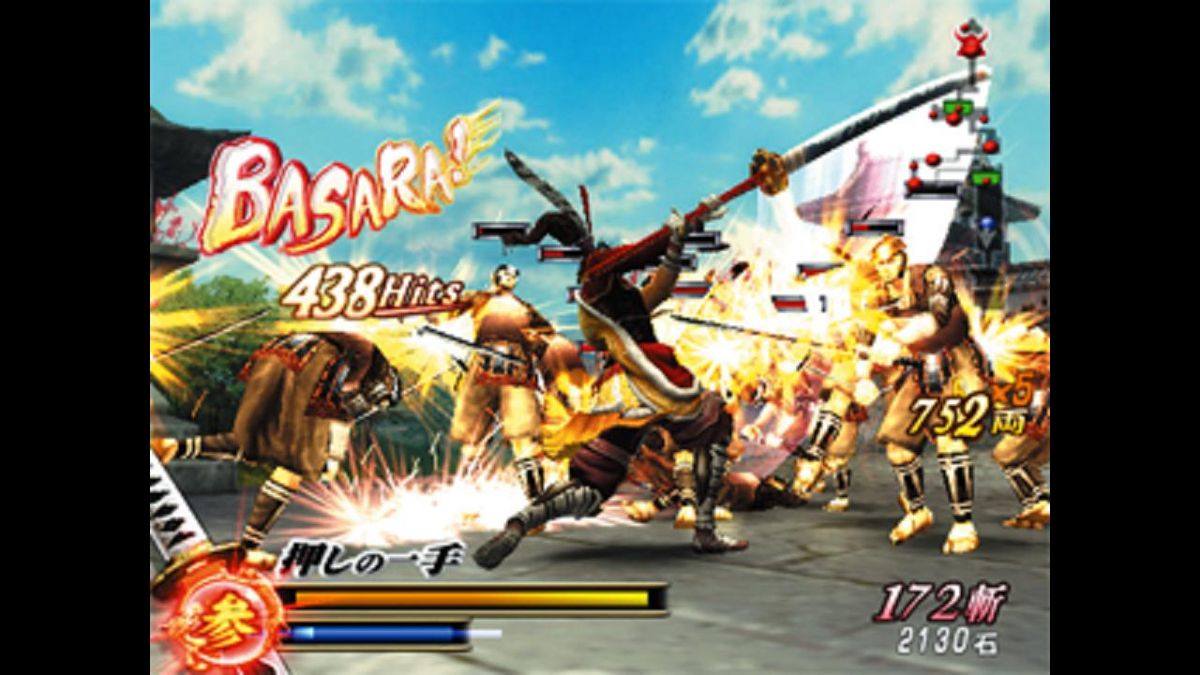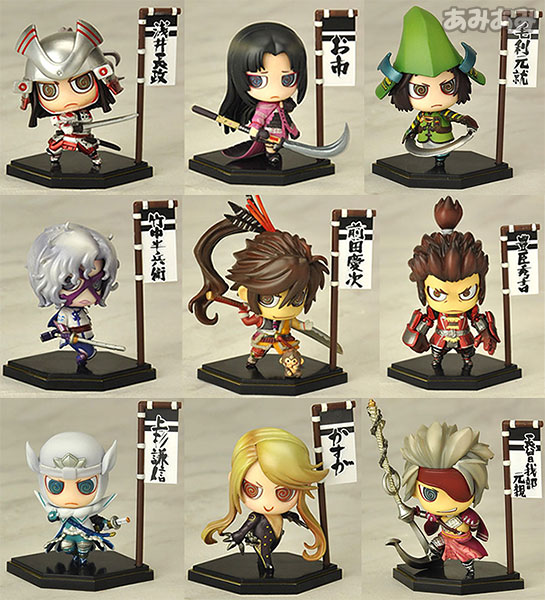The first Sengoku Basara wasn’t exactly a big hit in Japan
No T.M. Revolution.
We’re off to a… bad start?
Capcom would later patch this inconsistency by replacing
their opening song with a T.M. Revolution one for the HD Collection re-release. I like High and Mighty Color, and the
original opening is fine, but I think the loud, almost screaming singing and
heavy guitar chugging of T.M. Revolution's fits the franchise’s hardcore action
and frenetic energy better.
Having typed that, it's not like High and Mighty Color doesn't have songs with screaming singers and heavy guitar chugging too. In fact the very next song on that very same album is one! Capcom just didn't go with that.
Anyway, the plot of Sengoku Basara 2 is not very different from the
first game. It’s the Sengoku period and
everyone is fighting each other, but this time with a major new force entering
the fray: Hideyoshi Toyotomi, the second unifier of Japan
Sengoku Basara 2 also introduces Toshiie’s nephew Keiji
Maeda and some non-playable characters to fight, like Masamune’s confidant Kojuro
Katakura and Nobunaga’s sister Oichi, alongside her arranged husband Nagamasa
Azai.
While the setup hasn’t departed from the initial concept,
each character’s story is front and center.
There is now a dedicated story mode with a separate conquest mode that
closer resembles the single player mode of the first game.
Sadly, the Manglobe anime cutscenes from the first game do
not return, probably because with the way the stories are more focused and
diverse, they wouldn’t be able to re-use them for multiple characters. Instead Capcom upped their in-engine cutscenes
to go beyond just character introductions. Characters now have much more motion capture
applied to their models for some storytelling mid-stage. The cinematography and body movements for the
in-engine cutscenes are well-done, but the faces are static. On one hand, this was after 3 Devil May Cry
games, where facial animation was done to great effect, and it’s very odd they
didn’t apply it here. On the other hand,
the realistic body motion capturing combined with the unmoving head models give
off the vibe of a live action stage show or tokusatsu, where everyone is in
costumes, and there’s an undeniable charm to that, especially with one
particular group of elites who do an outright Super Sentai entrance.
There are no longer obviously useless special attacks and the
special attacks from the first game have been buffed or nerfed as needed. For example, that flash bomb attack I
mentioned before now makes Sasuke temporarily invisible, causing enemies to
ignore him, which is useful if you want to get past a particularly threatening
set of enemies. Sure some skills are a
little impractical or situational, but they all have at least some
utility. Basara attacks have also been
rebalanced so the stupid powerful ones are toned down in damage and the weak
ones are given a boost to be more useful.
Someone actually play tested this one.
The music now consistently kicks ass. Sengoku Basara 2 kept all the best tracks
from the first game and packed them in with new ones, including themes for
every character, all of which are bangers and would be used moving forward.
There are now over 20 characters and none of them are
moveset clones. Kasuga now has a new
fighting style utilizing kunai and Motochika’s moveset now has him swinging an
anchor around. This is also where
Motonari got his iconic ring blade.
Everything that the first Sengoku Basara did wrong Sengoku
Basara 2 does right, with the exception of the lack of Manglobe anime
cutscenes. I miss those. It’s one of the finest, most polished
beat-em-up games ever made. There’s just
one big problem with it: the language.
Sengoku Basara 2 set Japan Japan.
In Japan America
In a quiet room, CEO Crappy Com rested with his face buried
in an enormous pile of white powder covering his desk. Suddenly his subordinate Captain Obvious
burst into the room.
Regardless of Capcom’s efforts, Sengoku Basara 2 was one of
the biggest titles for people who imported Japanese games. Since it
had so many American fans, there are translations online for Sengoku Basara 2 for both
story and menus from among the people who were playing it back then, but just
like with the first game, the fact that I have to do that, coupled with the
awful speaking style all the Japanese actors use, seriously puts a damper on my
enjoyment in what is otherwise one of the all-time greats I’ve sunk many hours
into. Because of that I can only give
Sengoku Basara 2 a 7 out of 10 instead of the 8 out of 10 it deserves.





No comments:
Post a Comment